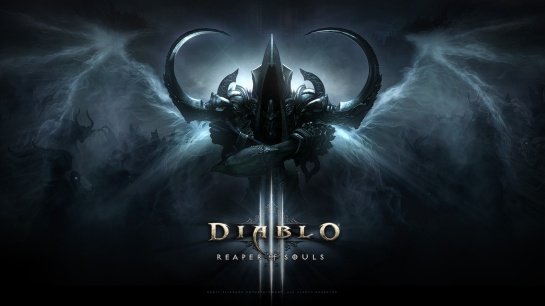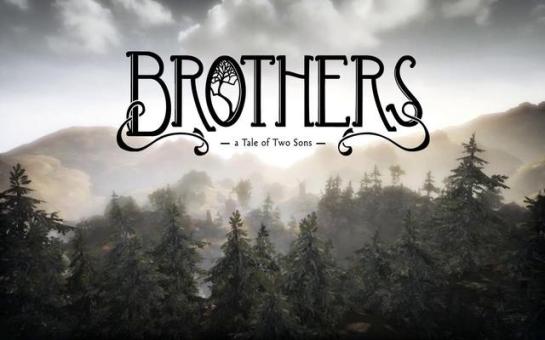For those of you who know me, you probably know my love for the Diablo series and how I used to play both Diablo and Diablo II religiously when they first came out. Those games opened my eyes and heart to a whole new genre of games… That genre I will call, Loot porn. Now when Diablo III launched I was excited, hell I was awaiting it’s release ever since the first screenshot came out. And when it did launch, it seemed to me as if Blizzard took the Loot Porn genre and did everything in their power to monetize it. Then came Reaper of Souls.
Reaper of Souls is Diablo III’s first expansion set released in March of 2014, and while the “expansion” only added one act and one class – unlike Diablo II’s Lord Of Destruction which added two classes, an act, and a shit ton of items – it seemed as if the expansion was overpriced for selling at $40 when it packed barely DLC content. Or so it seemed anyway before actually playing Diablo III after a hiatus that lasted months.
The reason I had stopped playing Diablo III was because I honestly am not good at economizing stuff. So I was a level 60 monk with shit gear and barely any gold to buy anything off the auction house. And that seemed to be the first thing Blizzard addressed in their numerous – and might I add, free – game patches they released for Diablo III in preparation for Reaper of Souls. The Auction House and the Real Money Auction House were to be gone, no more can you buy your way to a staggering one million DPS, or get that fabled Horadric Hamburger that – and I shit you not – I witnessed selling for 30 euros. And that was certainly a relieve for someone like me who would count on only the loot they’d get throughout farming the many areas the game offered.
But in farming lied another issue, the loot – again, unlike in Diablo II and Diablo – was next to shit. You would need magic find anywhere between 300% and 400% to have a decent chance at getting decent loot, and some legendaries. So throughout my 120 hour journey with my monk, I accumulated exactly three legendary items through drops. None of which were even okay. And in light of that, Blizzard sought to fix the issue, by bringing forth Loot 2.0 – which is basically fancy for “now you get relevant shit” – and with Loot 2.0 the game dynamic changed 180 degrees. No longer do you need to rely on the auction house for your decent gear, the new loot system has increased legendary drops and items suited to your class. Rarely will you see a wizard only orb while playing as a monk. You’ll always get something relevant, and the drops keep getting better and better the higher the difficulty goes, bringing back how we all loved the notion of the loot porn that is Diablo.
The patches also brought a level cap increase, in both regular levels and Paragon, now you can level up to 70, with some new passive and active skills, along with having the chance to build your character a la Diablo II thanks to the revamped Paragon system. Each paragon level grants you one point to put anywhere you want within a set of 16 choices, some of which include critical chance, life on hit, and elemental resistances. Oh, and the paragon cap has been raised from 100 to 300.
Another game mode also made an appearance, that mode is Adventure mode. Basically it’s what you always did in Diablo, but now it’s acknowledged by Blizzard and you get rewarded for it. Each act within the game has some bounties to get, five to be more specific, distributed among areas Diablo players always frequent anyway to farm. Each bounty gives you an objective or two to accomplish and a boss to defeat, after which you are rewarded with gold, experience and a key fragment. Five key fragments make a rift key that you can use to travel to a weird dimension where it’s a regular Diablo area but with monsters from all over the game. Which opens up the game to a lot more of a varied gameplay, you can get those annoying desert bees that spew out poisonous smaller bees alongside fire spiders. It keeps you on your toes and forces you to keep trying to adapt, which in turn validates Diablo III’s decision in not making skill allocation permanent. In the rift you’ll have to kill every single thing you see until a bar fills up, then a rift boss shows up, after beating said boss, you get rewarded with gold, experience, items aplenty, and blood shards.
Blood Shards are basically a throwback to Diablo II’s gambler, with the blood shards you can purchase items that you don’t know what they’ll be. A one handed weapon costs 15 blood shards for instance, you can get a shit item, or you can get that one legendary that finally gives your character the boost they sorely needed.
The new class, the Crusader, is also a throwback to Diablo II’s Paladin – complete with auras and a hammerdin build -. The Crusader, as a friend described the class, is basically the fun version of the Barbarian. You can dual wield two two handed items, or one two handed item and a shield, you have skills that look so sick – think you riding a carriage chaining enemies and dragging them on the ground as your carriage runs – and you get the awesomeness of playing the character class closest to my personal Diablo II favorite class. Not that that would make much of a difference, but points still.
Before I wrap up this review I would like to point out that Blizzard did one heck of a job rebuilding Diablo III. The fifth act looks grittier than ever, definitely in tune with how Diablo III should have looked like all along. The music is sinister and melancholic to perfectly mirror the ambiance of the new act. And the story, as all Diablo stories before it – and again, personal opinion – is next to crap. Which does neither surprise me, nor turn me off from the expansion. Diablo III Reaper Of Souls was set to rebuild Diablo III and make people want to play it again, and at that it succeeded.
If you’re on the fence about this new expansion, don’t be. While at first glance it may seem like it doesn’t add much, it actually adds a ton of stuff to the game and rejuvenates it (see what I did there?).










